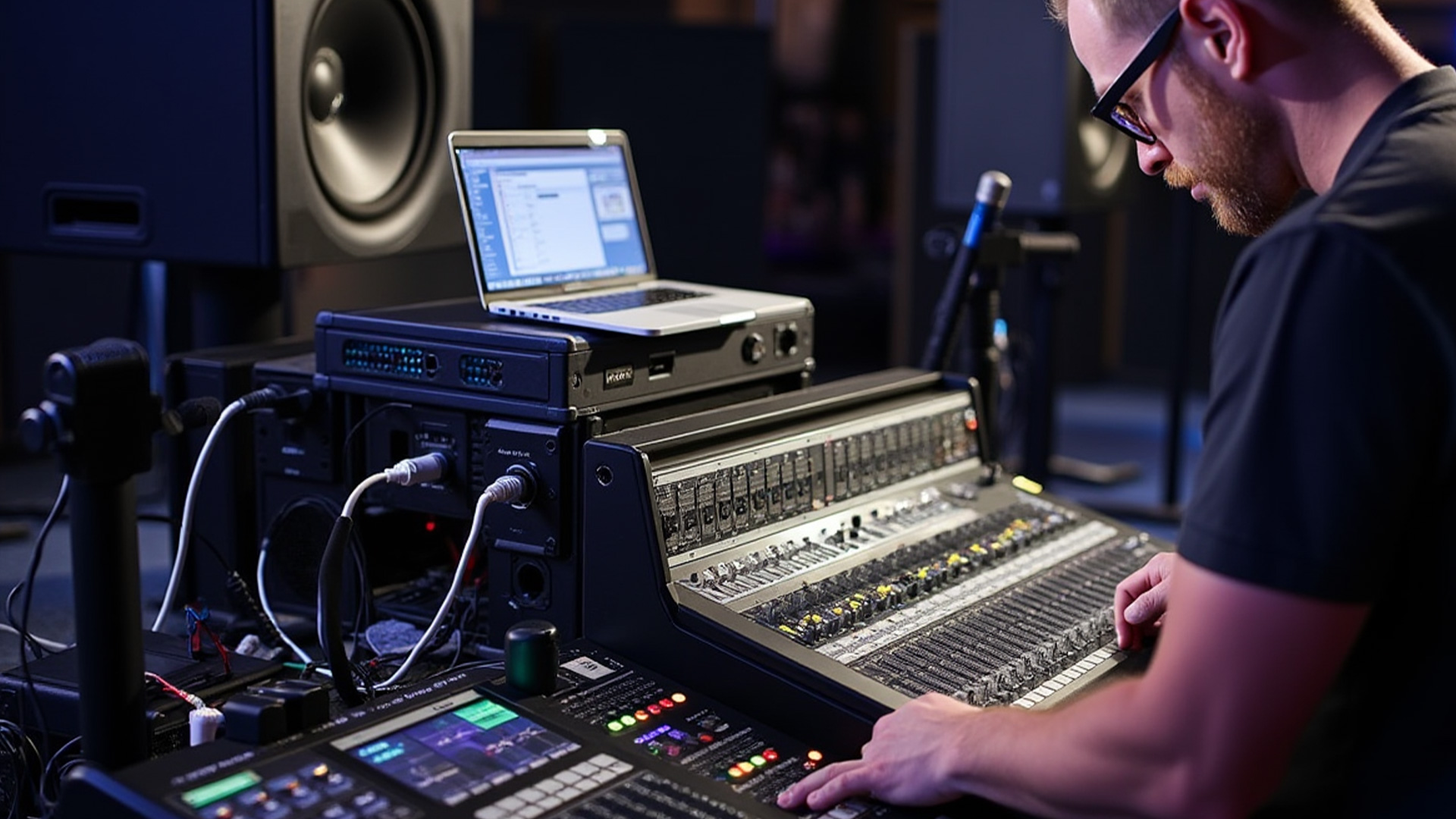In the world of live entertainment, every detail matters — the lighting, the visuals, the energy of the crowd — but none of it works without powerful, clear sound. Whether it’s a concert, festival, wedding, or corporate event, the quality of your audio setup determines the overall experience. For most event organizers, audio gear rentals are the most practical, flexible, and cost-effective way to achieve professional-level sound without owning expensive equipment.
This complete guide explores what’s included in audio gear rentals, how to select the right setup for different events, common mistakes to avoid, and why professional assistance is key to achieving flawless sound performance.
Why Rent Audio Gear Instead of Buying It
Purchasing high-end audio equipment can be incredibly costly, especially if it’s used only a few times per year. Renting gives you access to premium gear for a fraction of the cost while allowing you to tailor the setup to each event’s specific requirements.
The advantages of audio gear rentals include:
-
Access to the latest technology — from digital mixers to wireless microphones and line array systems.
-
Professional setup and support — ensuring sound is optimized for the venue.
-
No maintenance or storage concerns — once the event is over, the rental company handles it.
-
Flexibility — adjust equipment size, power, and configuration depending on your audience and location.
This makes renting the ideal choice for organizers who need dependable performance without long-term investment.
Core Components of an Audio Setup
Every event requires different sound configurations, but there are a few essential components that make up nearly every system.
Mixing Consoles
The mixing console (or soundboard) is the brain of your audio system. It allows engineers to control levels, EQ, effects, and routing. Modern digital mixers such as the Yamaha CL series or Allen & Heath SQ series offer scene recall, multitrack recording, and remote control from tablets.
Microphones
From dynamic microphones for vocals to condenser mics for instruments, choosing the right microphone is crucial. Wireless systems add mobility for performers, while lavalier and headset mics are ideal for presenters and conferences.
Speakers and Amplifiers
Speakers come in various configurations — from compact powered monitors to massive line arrays designed for large outdoor events. Amplifiers are needed for passive systems, ensuring enough power to drive the speakers without distortion.
Monitors
Stage monitors (wedges or in-ear systems) let performers hear themselves clearly, improving timing and pitch. In-ear monitoring systems are increasingly popular for their clarity and stage space efficiency.
Cables and Accessories
A reliable sound system depends on high-quality cables, DI boxes, and signal processors. Even a small fault in cabling can lead to hums, dropouts, or total system failure.
Choosing the Right Setup for Your Event
The right configuration depends on the type of event, the size of the venue, and the number of attendees.
-
Small indoor events: Two speakers, a small mixer, and a few microphones are often enough.
-
Medium-sized concerts or conferences: Use subwoofers for low-end reinforcement and multiple stage monitors.
-
Large outdoor events: Line array systems and multiple delay speakers are essential to cover wide spaces evenly.
Always discuss your venue’s acoustics with your rental provider. Sound behaves differently indoors versus outdoors — reflections, reverb, and ambient noise can drastically affect the clarity of your mix.
Common Mistakes to Avoid
Even experienced event planners make mistakes when dealing with sound. The most common include:
-
Underestimating power requirements.
-
Ignoring acoustics — hard walls or open-air setups require specific tuning.
-
Forgetting backup equipment (spare cables, microphones, batteries).
-
Not scheduling enough soundcheck time.
Avoiding these pitfalls can mean the difference between a smooth show and a technical disaster.
Working with Audio Technicians
Professional technicians are essential for managing complex setups. They handle system tuning, stage patching, feedback control, and troubleshooting. An experienced audio engineer can optimize your rented gear to deliver the best sound possible, adapting to each venue’s unique challenges.
The Role of Modern Technology
Today’s rental gear integrates advanced digital technology for improved control and quality. Many sound systems now feature:
-
Remote control via apps and tablets.
-
Built-in DSP (Digital Signal Processing) for automatic EQ and compression.
-
Networked audio (Dante, AVB, AES67) for efficient routing and monitoring.
-
Real-time frequency scanning for wireless systems.
These features make it easier to maintain consistency and reliability throughout long events or tours.
Environmental Considerations
Portable sound systems for outdoor events must withstand dust, humidity, and temperature changes. Always ensure equipment is properly protected from the elements — especially amplifiers and digital consoles. Using weatherproof covers and power conditioners helps prolong gear life and ensures consistent sound quality.
The Future of Audio Rentals
In 2025 and beyond, we’ll see further advancements in rental technology — from fully networked systems to eco-friendly, energy-efficient amplifiers. AI-based sound tuning tools are already emerging, helping engineers balance mixes automatically.
Conclusion
Renting professional audio equipment is not just a budget-friendly solution — it’s a way to guarantee world-class sound quality, flexibility, and peace of mind. With the right provider and technical support, your event can deliver flawless audio from start to finish.
